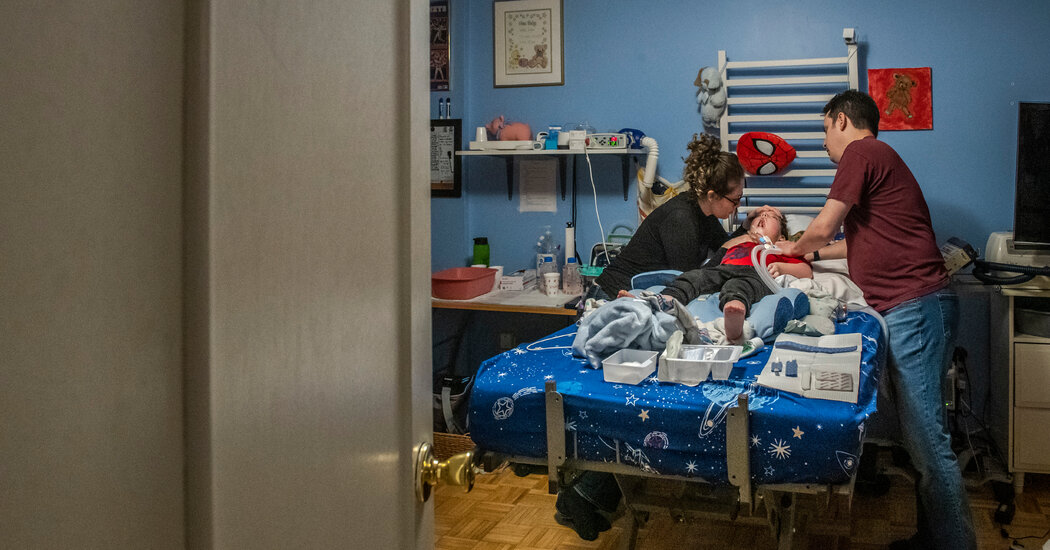Many had placed their hopes on the Biden government’s infrastructure plan, which would allocate $ 400 billion to improve home and community care. But with the President and Republicans arguing over the scope and scope of the proposal, it is unclear whether that part will survive.
Parents, meanwhile, are increasingly carrying an inexorable burden alone.
The pandemic deepens a wage gap
A nurse who cares for a medically weak child at home has the same duties as in a hospital, but no emergency medical assistance. It’s a tightrope, and experts say prevailing wages don’t reflect the difficulty.
Federal guidelines allow state Medicaid programs to cover home care for eligible children regardless of their families’ income, as the price of 24/7 care would ruin almost anyone. But states generally pay nurses for home care at much lower rates than they do for equivalent care in a hospital or other medical center.
“They’re effectively setting a benchmark for employee compensation that puts this area at a competitive disadvantage,” said Roger Noyes, a spokesman for the New York State Home Care Association. In return, government-approved home health insurers that provide nursing families with nurses pay meager salaries and rarely offer health insurance or other benefits to the nurses they employ.
Although home care is better suited to medically ill children, hospitals get about half of Medicaid spending on these cases, compared with 2 percent on home care, studies show.
And Covid-19 created competing demands on care that further reduced the number of home care workers. In light of the pandemic, the state’s largest healthcare provider, Northwell Health, hired 40 percent more nurses in 2020 than the previous year, and hired 1,000 additional temporary nurses once the local hiring pool ran out.
Robert Pacella, the executive director of Caring Hands Home Care, the agency that oversees Henry’s case, noticed the change in January as nurses began reducing shift opportunities and decreasing new applicants.


Comments are closed.